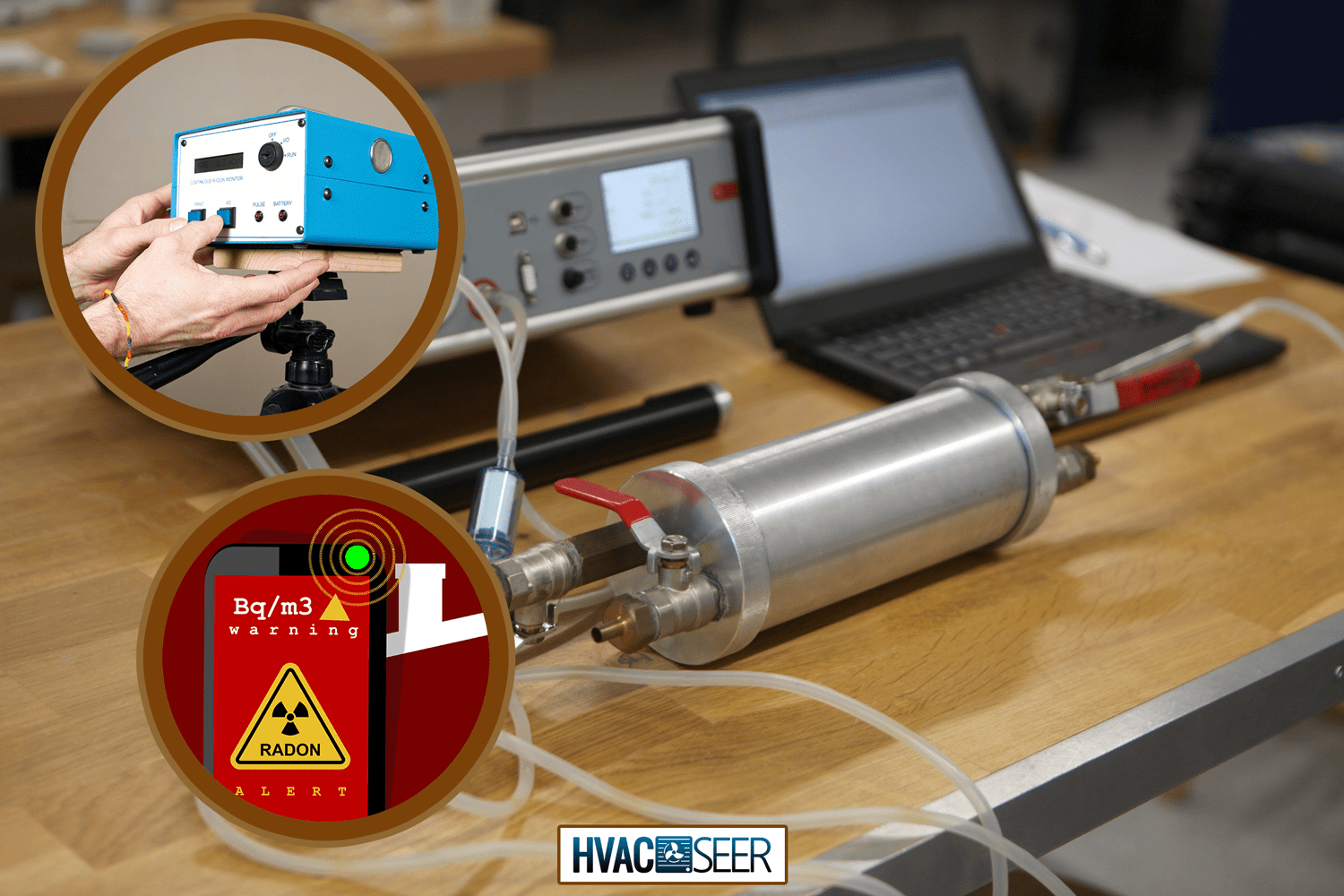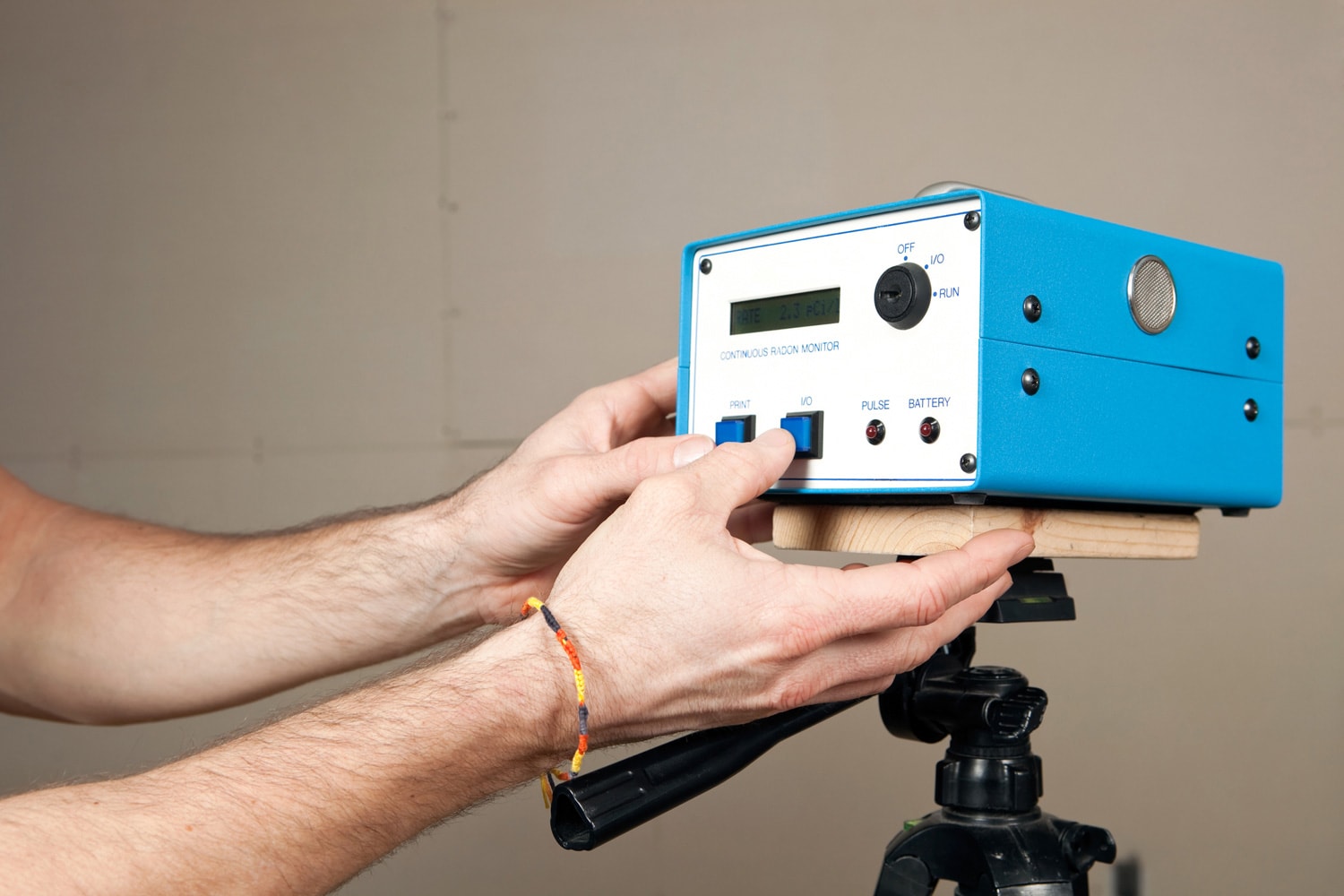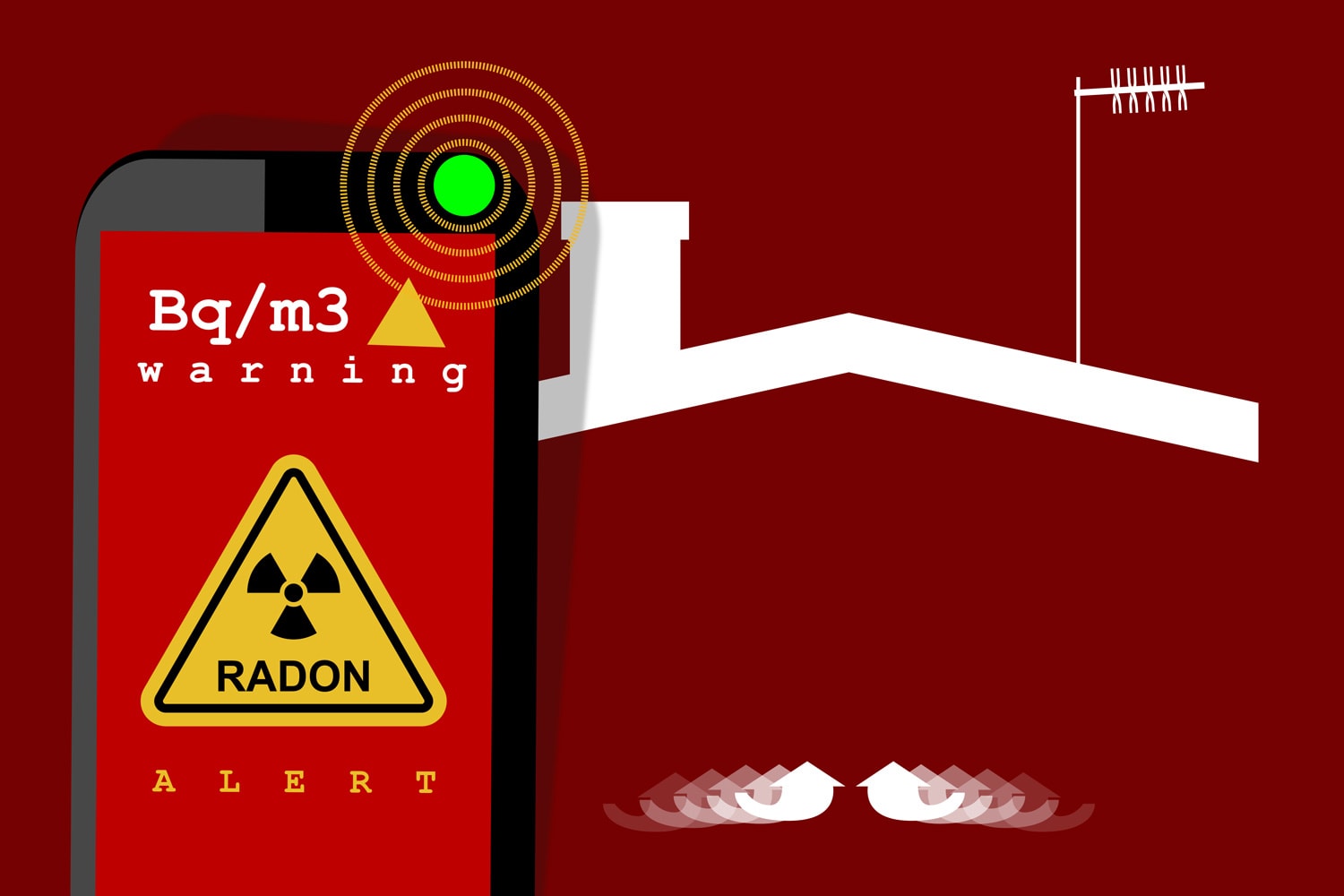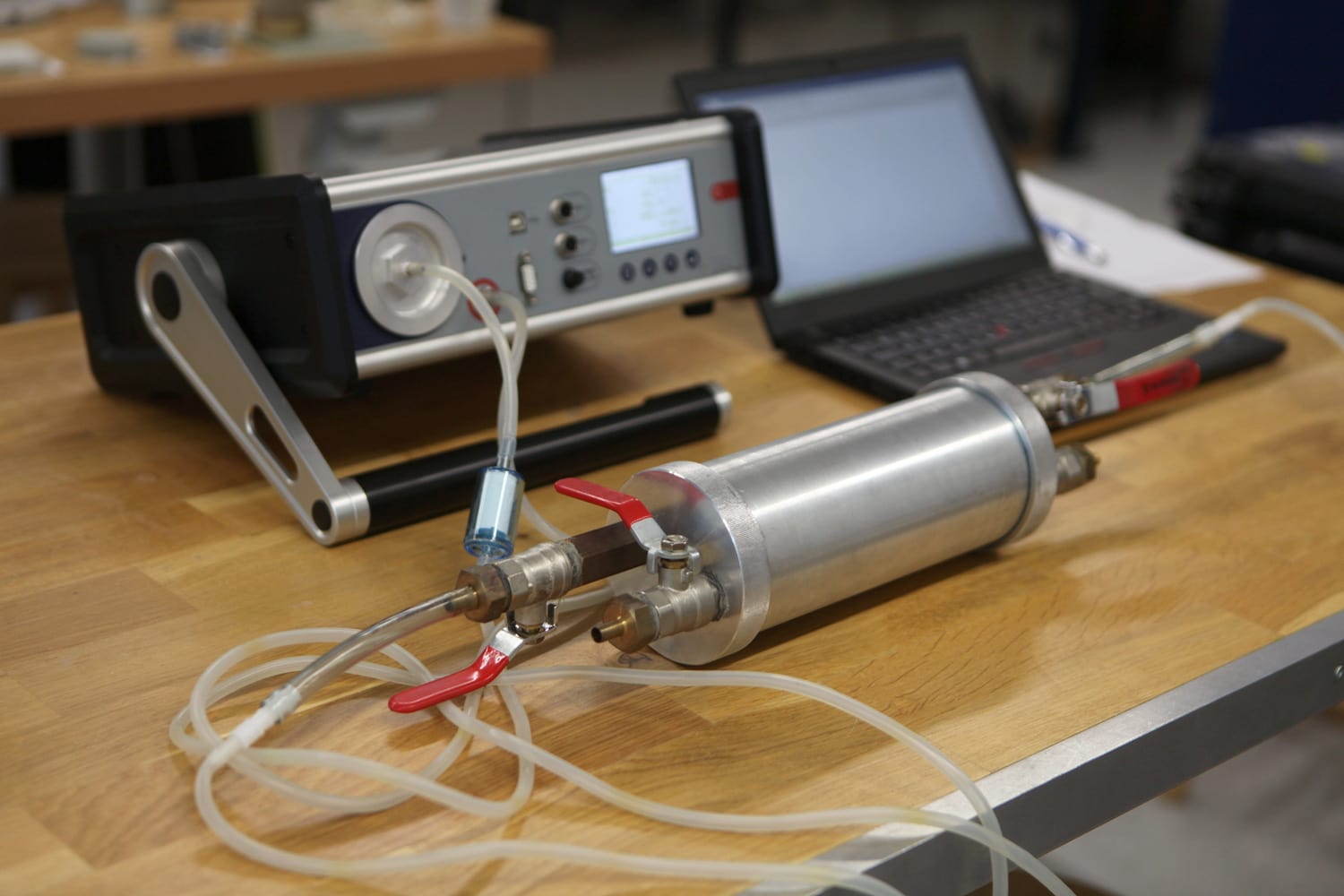Radon detector requires resetting just like other electrical devices. As a homeowner, you may be wondering how an Airthings radon detector can be reset when the need arises. Fortunately, we have done some legwork for you, and here is what we found.
Resetting the Airthings radon detector is an easy-to-do task. Here are the steps to follow if you want to reset your Airthings radon detector:
- Locate the reset button.
- Press and hold the reset button.
- Give one quick press to the reset button.
Resetting the Airthings may seem difficult but you can perform the task without the help of a professional.
Keep reading to get detailed information on how to reset an Airthings radon detector. We'll also see how their radon detectors work, how long they last, how accurate they are, and more!

How Does Airthings Radon Detector Work?
This depends on the type of radon detector you have. A sedentary radon detector compiles data on air behavior. An effective radon detector can detect radon by looking for alpha atoms in the air.
Radon radiates alpha particles. The more alpha particles in the air, the greater the concentration of radon in your home.
A radon detector alerts you if radon levels rise. The Airthings Wave device is a useful devices to get if you live in an area known to have a high radon level.
Click here to see the Airthings Wave radon detector on Amazon.
There are modest battery-powered radon detectors that work like carbon monoxide monitors and fume detectors. They erupt one to twenty instructing tones when they detect harmful levels of radon in your home.
Click here to see the Airthings 223 radon detector on Amazon.
Resetting Airthings Radon Detector
The work of a radon detector is to detect and reveal the amount of radon in a space. They help in monitoring radon levels. This means they offer constant awareness of the amount of radon that is in your home.
Follow the steps below to reset an Airthings radon detector:
Step 1: Locate The Reset Button
The first step to resetting an Airthings radon detector is finding the reset button. This button can be found behind the view monitor and it serves different purposes.
Step 2: Long Press The Reset Button
After locating the reset button, look for a pin or sharp thin object and press the reset button. This should be a long press of about five seconds.
After the long press, the monitor resets to factory settings. A countdown should appear on the view display.
Step 3: Short Press The Reset Button
After long pressing the reset button, short press the button so you can scroll through information regarding the monitor. After this, the resetting process is done.

How Accurate Is Airthings Radon Detector?
The result offered by a radon detector is more accurate during a longer measurement period.
It is better to check the radon level for at least two months to get a good indication of long-term exposure. This radon detector is not just accurate but also reliable.
The Airthings home detector is a bestseller. The device is calibrated in developed radon laboratories, so it gives the best outcomes.
According to Airthings, Wave shows local radon levels with 20% accuracy after one week and 10% after one month.
The results may seem wrong since snow, wind, and rain tend to raise the levels. If the wind picks up, the monitor may increase to 9.0 pci/l. This is not due to an increase in the levels of radon gas.
All Airthings detectors are checked against the AlphaGuard reference device. Since it is a competent detector with great precision, it is a good criterion for radon detectors or testing.
The device automatically calibrates the environment, improving accuracy and efficiency.
The detection of radon is important for the protection of lung tissue from short-lived alpha particles and long-lived radioactive substances.
How Long Do Airthings Radon Detectors Last?

Airthings radon detector can last for up to 10 years. When used well, no yearly calibration is needed throughout its entire lifespan.
If the device is kept in good condition, it may last for more than 10 years. The device should be dust-free. It should be kept away from ventilation openings, windows, and direct sunlight.
Why Is My Radon Detector Chirping?
No one likes a chirping radon detector. A radon detector makes some sound when the battery voltage drops below 3.3 V.
There may also be a simultaneous flash at an interval of five minutes followed by a five minutes stop. This happens until the battery dies.
A radon detector also chirps if the batteries are on the wrong side. Always make sure the batteries are arranged properly.
Where Is The Best Place To Put Airthings Radon Detector?
Radon detectors are easy to use and give accurate results. However, the placement of these devices plays a role in how well they work.
It is recommended to place your detector where you spend the most time in your home.
Cellars and lower floors usually have higher levels of radon than the upper floors. The position of the detector should be away from direct sunshine and high humidity.
Poor location choices can result in false-positive readings, so always think through your placement.
If you are concerned about radon in a certain area, you can test the room. However, a test focused on a particular room does not replace a general test.
Will Running A Fan Reduce Radon?

Radon is a dangerous gas that rises in the living spaces of your home. You can lessen the radon in your home by using a radon relief system.
Fans can reduce radon levels by 50%. When used in along with positive ion generators, ceiling fans can reduce radon levels by 90%.
This is achieved by a phenomenon called plaque-out, which neutralizes radioactive particles. They can be installed at a minimal cost.
The fan circulates the air so the radon gets closer to walls and furniture, where it can stick and is no longer get inhaled.
The fan should be left on all the time and placed in the room. Also, it should be big enough to conserve air motion. Fans are a simple and economical way of reducing the amount of radon in the home.
What Time Of Year Is Best To Test For Radon?
It is better to test for radon during the fall or winter months. This is because the window of your home is usually closed during this period. Radon levels are usually at the highest during cold months.
You can also test for radon any time, but make sure to close your windows and doors during the test to mimic the fall and winter conditions.
It is not advisable to test for radon during rain, snow, or wind storms because the readings tend to fluctuate from 2.0 to 6.0 pci/l during this period.
This happens due to negative pressure on the ground which makes a lot of radon move up via the building's cracks and foundation.
There are different types of radon testing procedures but most are ineffective. Some homes cannot get a good result if only one screening measurement is carried out.
For homes with a radon mitigation system, testing should be done every few years.
Radon gas measurements should be in progress because radon levels usually change often.

How Many Radon Detectors Are Needed In A Home?
The number of detectors needed in a home depends on its size and how often people stay in each area.
If you spend more than four to six hours a day in a certain area, you should consider installing a detector.
Since the areas below your home are usually the first place radon accumulates, you should consider installing a radon detector for every 2,000 square feet of frequently occupied rooms.
Most homes require two radon detectors. One in the living room, and the other in the bedroom. These rooms should be the ones that are mostly used.
If there are other rooms in your home where you also spend a lot of time, you should install a detector there as well.
To Wrap Up
Radon detectors have many advantages over efficient but disposable test kits. It is advisable to test your home to know the radon level.
After testing for radon and the result is between 2 pCi/L and 4 pCi/L, you should make effort to reduce radon levels. To reset your radon detector, all you need to do is to locate and long press the reset button, then short press.
If you enjoyed reading this post, here are similar articles you may like:
How To Ventilate A Basement With No Windows
How Long Does It Take For Gas Hot Water To Come Back?
What Is The Best Sealant For Basement Walls? [3 Great Options Explored!]


